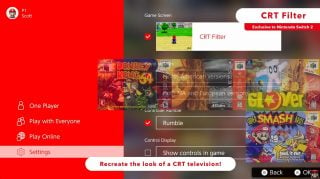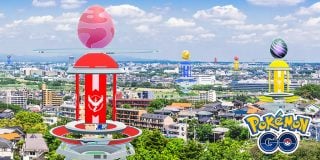When the original Super Smash Bros. came out I felt like the coolest kid in school. Sure, everyone knew who Mario and Pikachu were, but I was able to tell anyone who’d listen (and several that wouldn’t) who Fox was, or why Kirby was so important. I knew the roster inside out, and when I unlocked the likes of Luigi and Jigglypuff that trend continued. Even Captain Falcon was a familiar face, thanks to my older brother having rented F-Zero X.
Then there was Ness.
I couldn’t believe my eyes, a character I had no prior familiarity with. Nobody my age knew who he was, my brother didn’t know who he was, and the nice people at Blockbuster kindly asked me to stop calling. All I had to go off of was a single clue: EarthBound (SNES) listed on his profile page. I immediately had to learn how to play as this exciting new face. He was a kid, just like me, and didn’t fight with a sword or blaster. He had a baseball bat, a yo-yo, and the powers of his mind. While Kirby has always held a special place in my heart, Ness became (and has been to this day) my Smash Bros. main and sparked my fondness for the incredible world he came from.
Fast forward a bit and I’d done my homework on the matter, with a copy of the game now enshrined amongst my collection. EarthBound had become something very special to me, something that I wanted to share with as many people as I could. It wasn’t just because it was an enjoyable game or that it was an anomaly amongst its contemporaries. EarthBound has heart and soul, and a sort of way about it that can overtake you if you let it. Nintendo games have that quality, that N-Factor to them that makes you smile any time you open a chest in Zelda or hear a 1-up chime in Mario. That said, the way it manifests in EarthBound is more subtle and in turn more enveloping. This is a full, living world where everyone has something to say to you and even if it doesn’t matter, it all has purpose.
If I had to compare EarthBound’s game feel to anything else, it would be Pokémon. With an interconnected world full of random, turn-based encounters (though with some control over your engagement with them) with imaginative, memorable creatures as well as eight key areas to reach and battle with a stronger force; it’s easy to see the surface level comparisons. More impressive though are the more subtle similarities that serve to bring a familiar emotional response. The idea of children being free-range, traveling the world without supervision for a greater purpose is something that always brings a smile to my face. More importantly, they both take steps to illustrate that even if adventuring is fun and with purpose, they emphasize that home is just as crucial, always providing a loving family and a sense of nostalgia for where everything started. The power of friendship and trust thrives at the center of both franchises: with Pokémon it’s between you and your captured partners, while in EarthBound it’s both with those you travel with and, more remarkably, with the people you encounter along the way. The similarities aren’t coincidental, as many staff members who started work on the first Mother/EarthBound Beginnings would later go on to work on Pokémon as a whole, including current Pokémon Company CEO Tsunekazu Ishihara.
This is not the only significant link EarthBound shares with another Nintendo staple, as the game would not have existed without the tireless effort of the late Satoru Iwata. When Mother 2 was on the brink of collapse during its development, Iwata stepped up to practically reprogram the game from scratch in its entirety. Without his efforts, both as one of its producers and with its programming, the game could have been unceremoniously canceled. This serves as another anecdotal achievement in his lasting legacy and one that always stands out when I remember all he’d accomplished.
A large part of EarthBound’s identity thrives on its music. An eclectic mix of the likes of rock and blues music, electronic soundscapes, creepy tones and whistles, and some flavorful pieces to emphasize the locations established as separate from Eagleland; composers Keiichi Suzuki and Hirokazu “Hip” Tanaka created what may be one of the finest soundtracks of the SNES era. Also notable are the amount of samples of existing music that found their way into the game. From pieces of the themes of television shows like The Little Rascals and Monty Python’s Flying Circus, as well as inspirations from the likes of Chuck Berry and John Lennon; on paper it sounds almost impossible that all of this could create a cohesive package, but despite all odds, it not only succeeds but exceeds in the art of curating a player’s experience through sound.
My enjoyment of this game and its world is owed to all the above mentioned, but two individuals in particular deserve further credit. The first is Marcus Lindblom, the English localizer of the title. Without his humor and dedication to maintain the tonal experience of the game it could have been an entirely different experience. By his hard work to properly portray an outsider’s perspective on America while simultaneously highlighting the inherent humor of those within the country itself, he played a significant part in giving this game the trademark humor and strangeness that has become synonymous with it. This of course comes alongside the original, Japanese script writer, Shigesato Itoi. Not only did he write the game but he also produced and directed the entire project, serving as the creator of the entire Mother series. His unique worldview and personal philosophies are the heart of this experience, and without his work I and several others would not have this beautiful game.
EarthBound has become something very special, a cult classic in the truest sense. Without the tireless work of the folks from the likes of Starmen.net, Fangamer, and EarthBound Central, and thousands of other fan artists, writers, musicians and gamers, we wouldn’t be able to play this game or its predecessor on the Wii U. The things I’ve said today have mostly been said before in different ways, but this shared love of EarthBound is why they’re worth saying again and again. Thanks to this game, I’ve made friends, experienced a community, and am able to enjoy and share its unique world more fully through this writing. With the release of EarthBound on the New 3DS and Wii U virtual consoles, I implore anyone who hasn’t experienced the strange, funny, and heartrending world of Mother to purchase and play what is one of my favorite games of all time.
End credits
If you didn’t catch this in this article’s title, “Smiles and Tears” happens to be the song that plays throughout the end credits in EarthBound. Have a listen!
Iwata EarthBound sprite: Source 1.
Iwata EarthBound sprite: Source 2.





